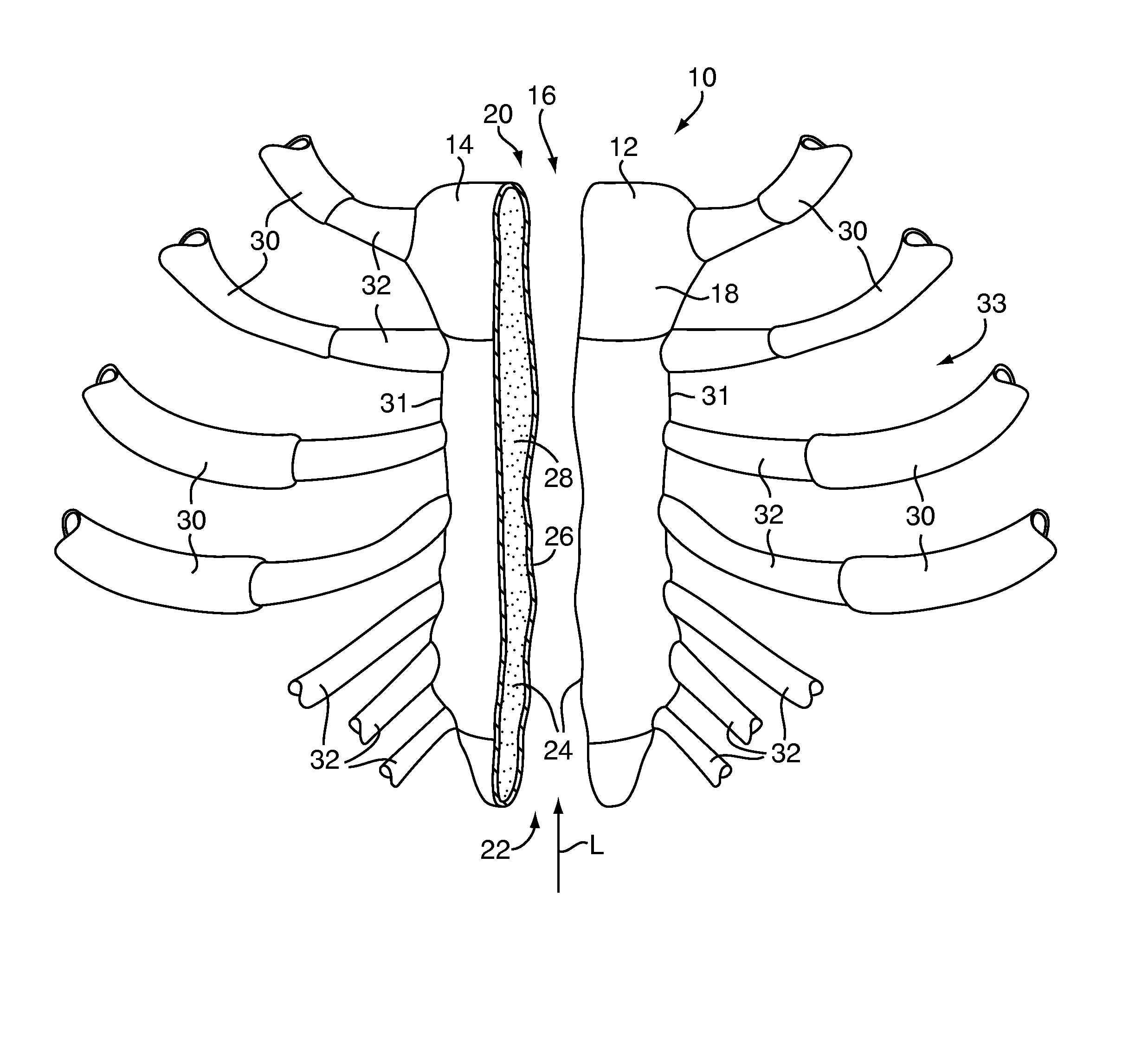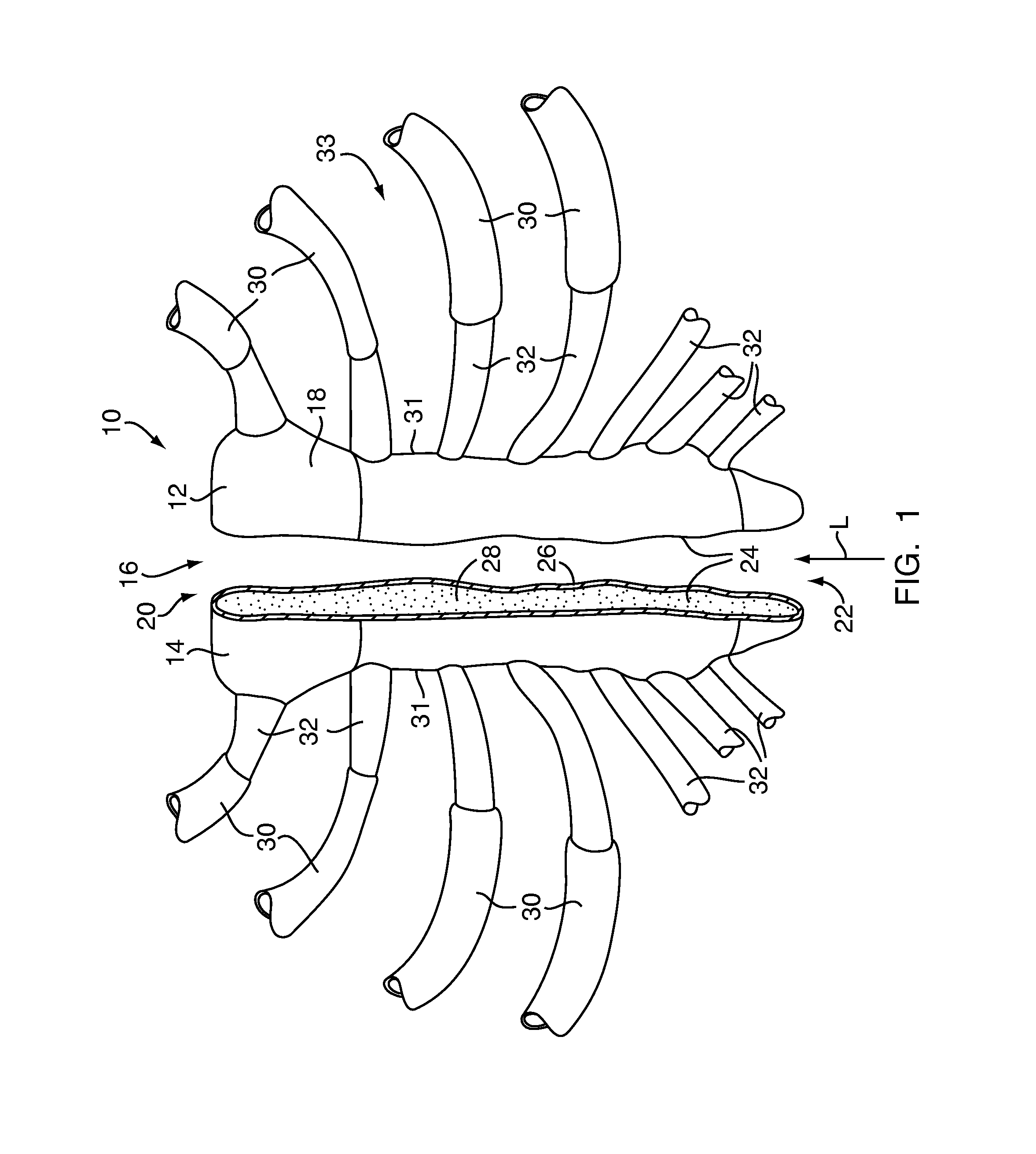Methods and devices for sternal closure
a technology for sternal closure and sternal artery, applied in the field of surgical procedures, can solve the problems of reducing lung capacity, pain and discomfort for patients, and little resistance to other forms of relative motion, and achieve the effect of inhibiting the adhesion of adhesives and removing contaminants
- Summary
- Abstract
- Description
- Claims
- Application Information
AI Technical Summary
Benefits of technology
Problems solved by technology
Method used
Image
Examples
Embodiment Construction
[0059]Referring to FIG. 1, the present invention provides a method for closure of a sternum 10 that has been separated into a first sternum portion 12 and a second sternum portion 14 by an incision 16, for example, from a surgical procedure such as a median sternotomy. The incision 16 extends in a longitudinal direction L approximately along a midline of the anterior surface 18 of the sternum 10 from an upper end 20 to a lower end 22. The incision 16 forms a cut surface 24 on each of the first and second sternum portions 12 and 14, exposing the sternum's composite bone structure having a shell of cortical bone 26 surrounding a core of cancellous bone 28. A plurality of rib bones 30 are connected to peripheral edges 31 of the sternum 10 by cartilage 32 to form a thoracic cage 33 for protecting internal organs from physical trauma.
[0060]Referring to FIG. 2, at the end of the surgical procedure, such as a sternotomy, an adhesive 34 is applied to the at least one of the first and second...
PUM
 Login to View More
Login to View More Abstract
Description
Claims
Application Information
 Login to View More
Login to View More - R&D
- Intellectual Property
- Life Sciences
- Materials
- Tech Scout
- Unparalleled Data Quality
- Higher Quality Content
- 60% Fewer Hallucinations
Browse by: Latest US Patents, China's latest patents, Technical Efficacy Thesaurus, Application Domain, Technology Topic, Popular Technical Reports.
© 2025 PatSnap. All rights reserved.Legal|Privacy policy|Modern Slavery Act Transparency Statement|Sitemap|About US| Contact US: help@patsnap.com



